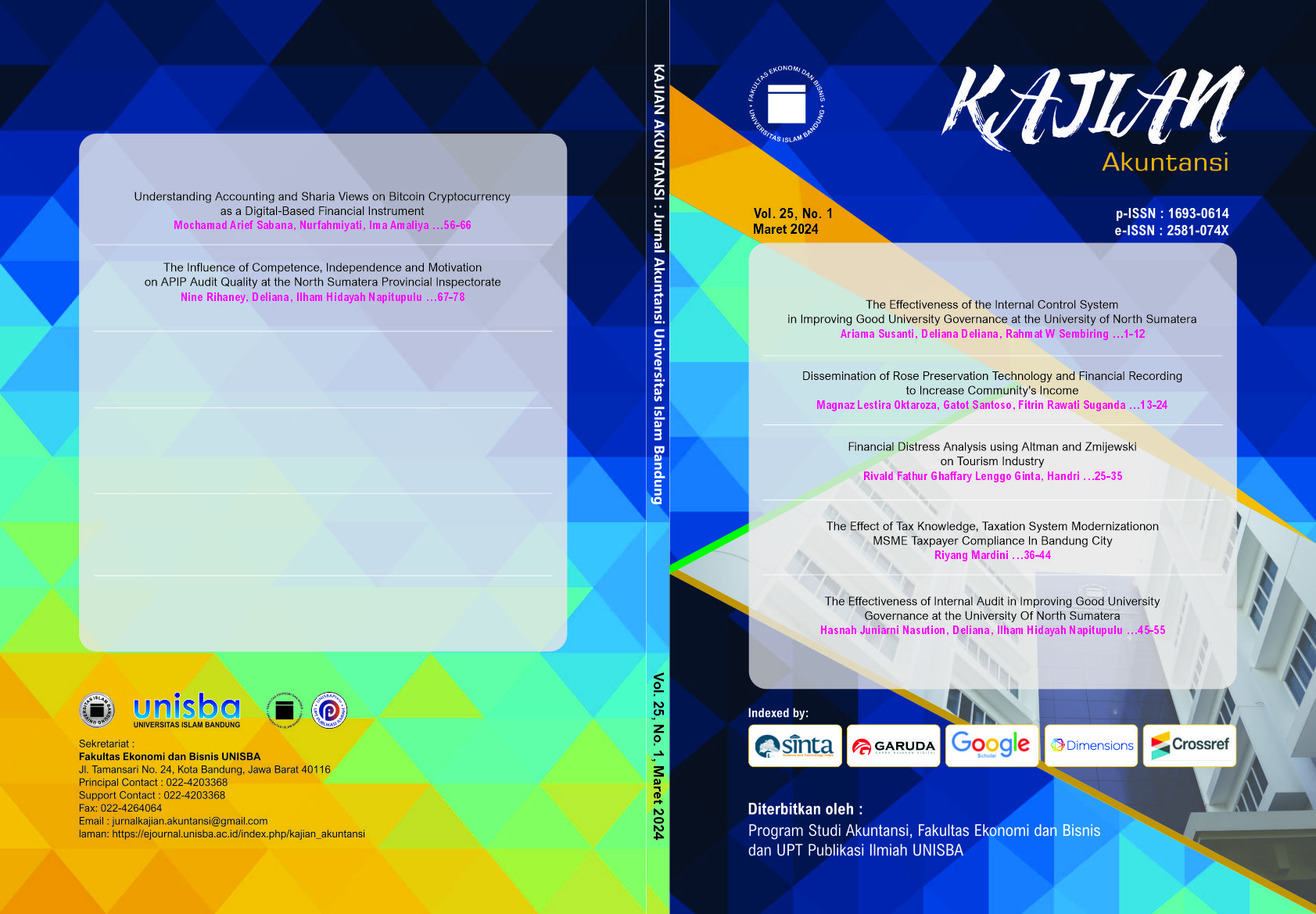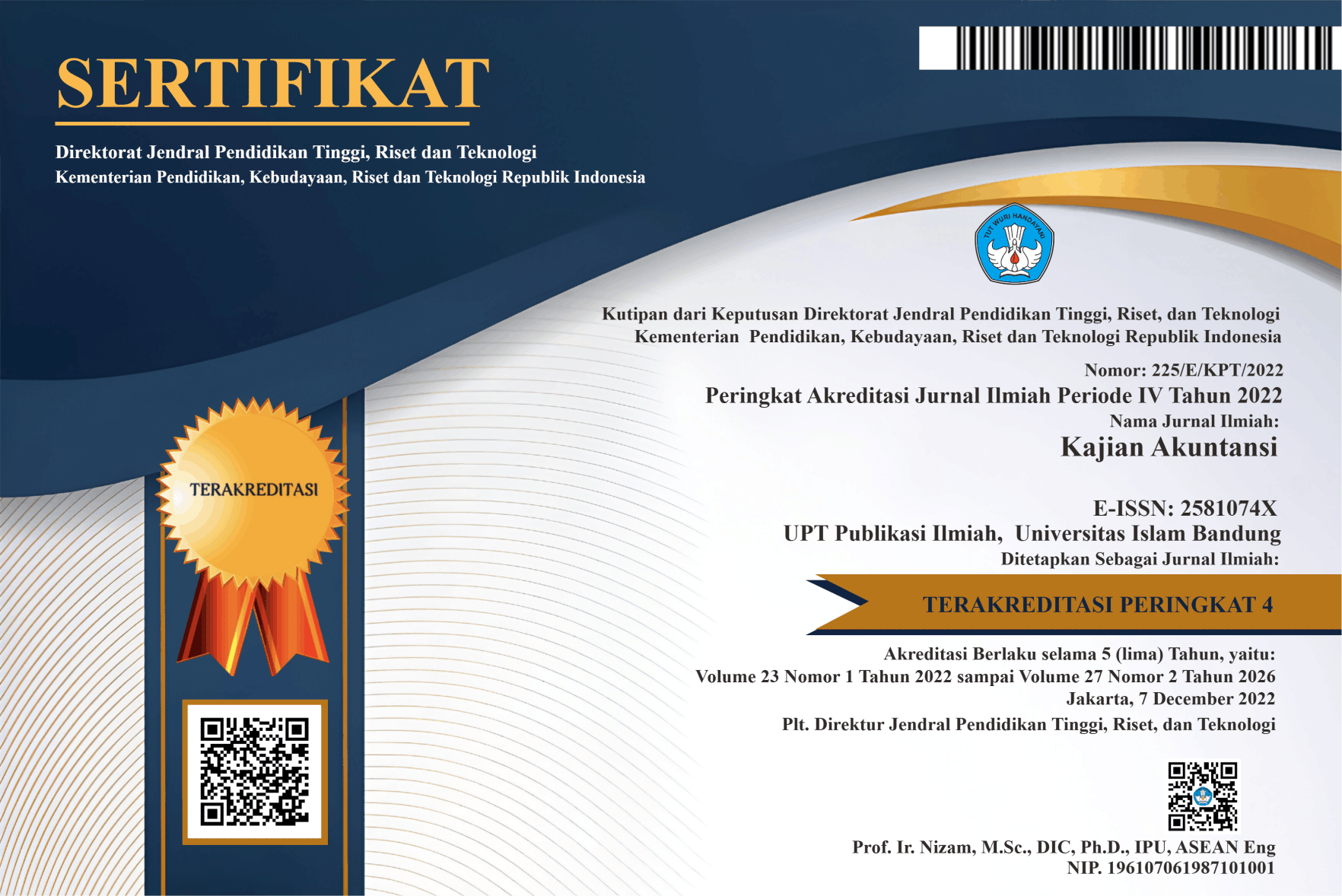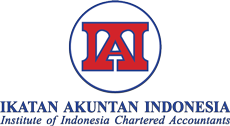DISCLOSURES OF THE CIRCULAR ECONOMY IN THE 2022 ASRRAT PLATINUM RATING COMPANY'S SUSTAINABILITY REPORT
DOI:
https://doi.org/10.29313/kajian_akuntansi.v25i1.3592Keywords:
Circular Economy, Disclosure, Sustainability ReportingAbstract
This study explores how a Circular Economy (CE) disclosure appears in a company's Sustainability Report. In particular, the existence of CE is analyzed using the 5R approach, namely: reduce, reuse, recycle, recover, and repair. The research uses qualitative and quantitative content analysis methods, with the 2021 Sustainability Report of 10 companies achieving the 2022 Asia Sustainability Reporting Rating Platinum rankings. The ten companies in question are four engaged in the banking sector, three chemical manufacturers, two energy, and one pharmacy. The research results show that the commitment to a circular economy has given rise to many innovations in reducing generation and reusing waste in companies operating in the energy and chemical industries, two business sectors that use non-renewable natural resources as the main raw material. In the pharmaceutical industry, encourage the use of incinerators as a means of burning B3 waste so that it is safe for the environment. Meanwhile, in the banking sector, commitment to a circular economy can be seen in efforts to reduce paper use, which is in line with the trend of digitalization of banking services, which tends to be paperless. The keywords reduce, reuse, and recycle (3R) are the most common in corporate sustainability reports. While the keywords recovery and repair only appear in 2 reports.
Keywords : Circular Economy, Disclosure, Sustainability Reporting.
References
Bappenas. (2021). The Economic, Social and Environmental Benefits of a Circular Economy in Indonesia. Jakarta: Kementerian PPN/Bappenas, Embassy of Denmark Jakarta and UNDP.
Bappenas. (2022). The Future is Circular: Langkah Nyata Inisiatif Ekonomi Sirkular di Indonesia. Jakarta: Kementerian Perencanaan Pembangunan Nasional/Bappenas.
Bryman, A. (2012). Social Research Methods, 4th Edition. Oxford: Oxford University Press.
Coalition Circular Accounting. (2022). Financial Accounting in The Circular Economy: Redefining Value, Impact and Risk to Accelerate The Circular Transition. Netherlands: Coalition Circular Accounting.
detiknews, A. L. (2023, Januari 13). detikNews: Berita. Retrieved from detikcom: https://news.detik.com/berita/d-6513862/perusahaan-asal-prancis-digugat-terkait-pencemaran-sampah-plastik
Ellen Macarthur Foundation. (2021). Circular Economy Glossary. Ellen Macarthur Foundation. Retrieved from Ellen Macarthur Foundation Web Site: https://ellenmacarthurfoundation.org/topics/circular-economy-introduction/glossary
Hjalber, M., & Karlsson, E. (2019, June). Circular Economy and Accounting Information: a study of the reporting of circular economy in Sweden. Bachelor Thesis, Accounting. Gothenburg, Sweden: School of Business, Economic and Law, University of Gothenburg.
IFRS. (2024). IFRS S1 General Requirements for Disclosure of Sustainability-related Financial Information. Retrieved from IFRS Foundation: https://www.ifrs.org/issued-standards/ifrs-sustainability-standards-navigator/ifrs-s1-general-requirements/
Krippendorff, K. (2004). Content Analysis: an Introduction to Its Methodology, 2nd ed. Thousand Oaks - London - New Delhi: Sage Publications, Inc.
Krishnanda, F. C., & Ludigdo, U. (2015). GRI Standard Implementation on Sustainability Report of Indonesia Sustainability Reporting Award (ISRA) Winners. Jurnal Ilmiah Mahasiswa FEB Universitas Brawijaya, Vol. 3, No. 2.
National Geographic Indonesia. (2019, Maret 27). Home: Lingkungan. Retrieved from National Geographic Indonesia: https://nationalgeographic.grid.id/read/131679050/lautan-dipenuhi-sampah-plastik-ulah-negara-maju-dan-berkembang
NCCR. (2022). Press Release 2022 Asia Sustainability Reporting Rating (ASSRAT). Jakarta: National Center for Corporate Reporting.
Nobre, G. C., & Tavares, E. (2021). The Quest for a Circular Economy Final Definition: a Scientific Perspective. Journal of Cleaner Production Volume 314, 10 September 2021, https://doi.org/10.1016/j.jclepro.2021.127973.
Opferkuch, K. C. (2022). Circular Economy Disclosure in Corporate Sustainability Reports: The Case of European Companies in Sustainability Ranking. Sustainable Production and Consumption 32, 436-456.
POJK. (2017). Peraturan Otoritas Jasa Keuangan No. 51/POJK.03/2017 tentang Penerapan Keuangan Berkelanjutan Bagi Lembaga Jasa Keuangan, Emiten dan Perusahaan Publik. Retrieved from https://www.ojk.go.id/sustainable-finance/id/peraturan/peraturan-ojk/Documents/SAL%20POJK%2051%20-%20keuangan%20berkelanjutan.pdf
Principles for Responsible Investment (PRI). (2022). Closing The Loop: Responsible Investment and The Circular Economy. United Nations Environment Programme Finance Initiatives and UN Global Impact.
RPJMN. (2020-2024). Peraturan Presiden No. 18 Tahun 2020 tentang Rencana Pembangunan Jangka Menengah Nasional.















